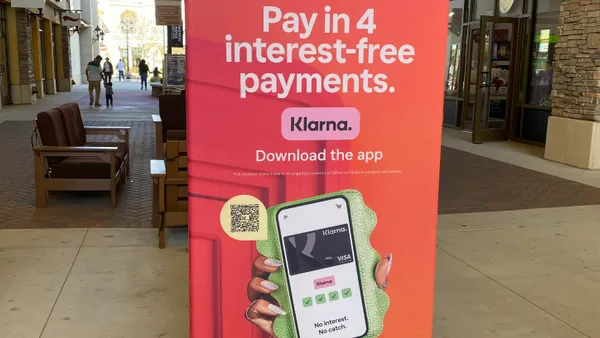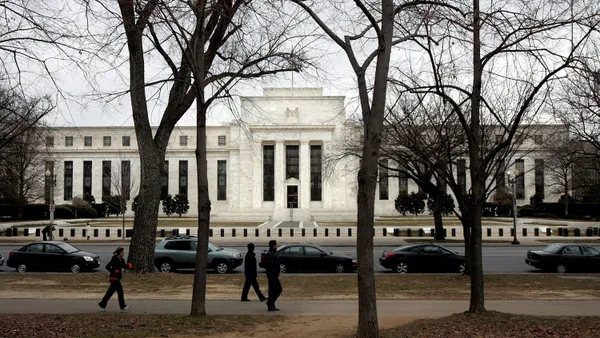Dive Brief:
- Zelle’s early marketing campaigns may have boasted about bank-grade security, but the popular peer-to-peer payment method is now among the top payment fraud threats, per a recent PYMNTS-Featurespace survey of 200 financial industry executives.
- Credit cards topped the list of fraud threats identified in the survey, with 64% of executives polled saying credit card fraud rates have increased in the last 12 months. However, 51% of those surveyed said Zelle fraud rates increased during the same period. By contrast, 44% of those polled said fraud rates for rival peer-to-peer payment app Venmo went down and 39% said they went up.
- Other emerging payments that could be considered fraud risks include buy now-pay later (BNPL), with 44% saying fraud rates for that payment method decreased over the past year and 39% saying they grew, the study said.
Dive Insight:
Card fraud is an ongoing concern for financial institutions, despite the popularity of newer payment methods, the PYMNTS-Featurespace study, released on Sept. 13, highlighted. But emerging payment methods, including P2P vehicles such as Zelle, Venmo, Cash App and others, are catching up, survey findings suggested.
P2P payment fraud is increasingly a source of tension between consumers and financial institutions. PayPal and Bank of America were recently sued over fraud risks of P2P payments linked to Venmo and Zelle, instances where allegedly fraudulent charges were not refunded.
The Consumer Financial Protection Bureau is expected to issue further guidance on fraud liability for transactions on P2P payment platforms like Zelle and Venmo, potentially setting up a drawn out battle between financial institutions and regulators.
Smaller financial institutions have been hit particularly hard with all types of fraud, with 71% reporting increased fraud rates and an average loss of 1.75 basis points per transaction, the report said. Overall, 59% of institutions surveyed said they experienced an uptick in fraud, with fraud loss rates averaging 1.29 basis points per transaction.
Artificial intelligence and machine learning technologies can help institutions more easily track and combat fraud, although institutions feel there are hurdles to implementation, the report said.
“Though the majority of financial institutions indicated that they wish to invest in new, AI-powered tools to block fraud and identify suspected money laundering, a key problem stands in their way: complexity. In particular, the complexity of implementation — especially regarding regulatory compliance — can impede adoption,” report authors noted.
Two-thirds of executives surveyed said regulatory standards are too complex and their solutions might not manage all of their compliance needs.
“Executives are simply waiting for the right battle-tested solution, rather than passively standing aside as fraud rates climb,” the report said.
Total losses from fraudulent transactions — including in-person payments — in the U.S. will grow by 8.2%, hitting $12.16 billion, according to a recent forecast from Insider Intelligence. Meanwhile, card-not-present payments fraud losses will total $8.75 billion in the U.S., up 11.3% from last year. That number will surpass $10 billion by 2024, according to the company.












